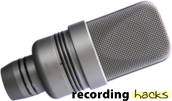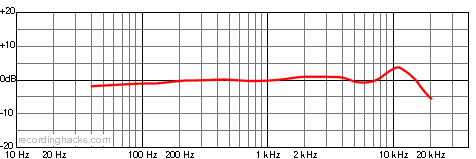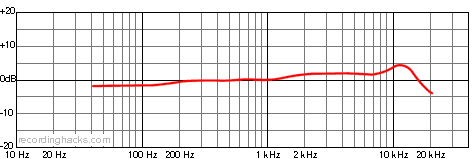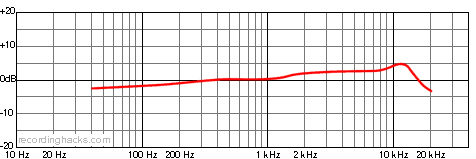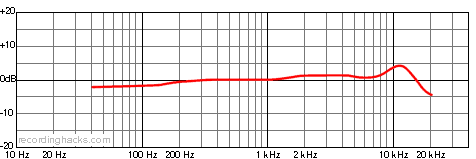



 Microtech Gefell UM 930
Microtech Gefell UM 930
Multi-Pattern Condenser Microphone
The UM 930 is a multipattern FET condenser with a dual-membrane large-diaphragm capsule. The mic is known for its low self-noise (7dBA) and high dynamic range (135dB).
Pattern selection is effected via a magnetic reed switch on the mic body. Five discrete patterns are provided: omni, wide cardioid, cardioid, hypercardioid, and figure 8. The mic’s circuitry mutes the output when the pattern switch is engaged; this prevents audible clicks through the signal chain when changing patterns on a hot mic.
The UM930 uses the same diaphragm/capsule as the M930 microphone, although in the UM930 there are two of them, positioned back-to-back.
The mic employs a unique phantom power circuit, in which the incoming power is fed through an optical converter, eliminating the phantom circuit as a source of potential noise.
The mic is available in three finishes and three configurations. Finishes include satin nickel, dark bronze, and 24K gold. The buyer can elect to purchase the mic alone (in a wooden case, €3570), with a swivel mic clip (p/n MH 80; €3410), or an elastic suspension mount (p/n EA 92; in aluminum case, €3570).
Optional accessories include: foam windscreen, popscreen, elastic suspension mounts, solid mic holders, and cables.
Hugh Robjohns, Line Up
The published polar patterns are all fairly tidy and consistent up to about 8kHz. Above about 12kHz the patterns collapse progressively towards a narrow figure- eight response — as most dual-diaphragm mics do. All patterns have a broad 4dB presence peak centered at about 12kHz, but the more directional the pattern, the stronger the HF tilt of the frequency response. At 5kHz the omni pattern is only 2dB higher than it is at 50Hz, but it’s 4dB for the cardioid, and almost 8dB for the figure-eight pattern. Proximity effect counteracts this tilt in many applications, however, and the rising response is not as obvious in use as the plots suggest. The broad presence peak is nicely judged to give clarity and air without exposing sibilance, too.
Comparing the cardioid mode UM 930 to the M 930, the two were sonically very similar, and the overall character of the UM 930 is clean and reasonably neutral.
Resolution Magazine
On vocals the UM930 was a winner. Its overall tonality is not quite as “in your face” as a Brauner Phantom, not quite as brutally honest as a 414, and not quite as soft around the edges as a U87. But while these three microphones can sound absolutely gorgeous with one vocal and completely unsuitable on another, the UM930 seemed consistently good with every voice I tried it on.
As of January 2008, Gefell’s list price for the UM 930 was €3570 (including suspension mount).
The Microtech Gefell UM 930 is also known as: UM930, UM 930 SCT.
Specifications
| Pickup Patterns | Pads & Filters |
|---|---|
|
Omnidirectional
(20 mV/Pa; 40 - 18,000 Hz) Cardioid (20 mV/Pa; 40 - 18,000 Hz) Hypercardioid (20 mV/Pa; 40 - 18,000 Hz) Bidirectional (20 mV/Pa; 40 - 18,000 Hz) Wide Cardioid (20 mV/Pa; 40 - 18,000 Hz) |
|
| Capsule Dimensions | Impedance | SPL/Noise |
|---|---|---|
| Diaphragm diameter: 25mm |
100 Ohms (Low) | Max SPL: 142 dB |
| Weight | Length | Max Diameter | Interface(s) |
|---|---|---|---|
| 930g (32.80oz) | 158mm (6.22'') | 65mm (2.56'') |
|
| Power Specifications |
|---|
|
Did we get anything wrong on this page? Please let us know!


